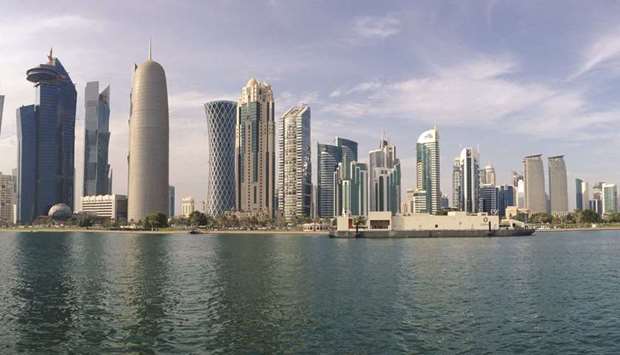Rapid expansion in Qatar’s non-oil economy is seen in record high output, new orders and purchasing activity based on June’s headline Purchasing Managers' Index (PMI), National Bank of Kuwait has said in its latest economic update.
Qatar’s headline PMI hit a new high in June of 67.5 (63.6 in May), NBK said.
Elsewhere in the GCC region, in Kuwait, the parliamentary budget and closing accounts committee approved the FY22/23 budget based on spending of KD23.1bn (5% higher than the initial draft) and revenues of KD23.4bn, the latter also upwardly revised, on a higher oil price assumption of $80/barrel. A small surplus of KD0.3bn is expected, NBK said.
Meanwhile, Moody’s rating agency expects the government to run fiscal surpluses over the next two years. This should lead to a stronger government balance sheet and fiscal buffers, NBK said.
In Saudi Arabia, the unemployment rate continued to trend lower, falling to 10.1% in Q1,22 from 11% in Q4,21, but the labour participation rate worsened to 50.1% from 51.5% in the same period.
Meanwhile, it was reported that Saudi Central Bank (SAMA) placed around SR50bn with local banks to ease a liquidity squeeze caused by credit outpacing deposit growth over the past two and a half years.
Through May, credit growth stood at 14.1% year-on-year (y-o-y) while deposits rose by 8.9%.
In the UAE, Dubai recorded 6.2mn visitors during January-May, almost three times as many compared to the same period in 2021 and only 14% below 2019 levels.
Meanwhile, petrol prices in the UAE were raised again in July, for the fifth time this year.
On oil, NBK noted Brent closed down 1.3% last week at $111.6/b (+43.5% ytd), with global recession fears outweighing further supply-side tightness concerns, this time due to outages in Libya. June was oil’s first monthly loss since November.
Meanwhile, Opec+ ratified its earlier decision to fully unwind supply cuts by August at the higher monthly rate of 648,000bpd (in July and Aug).
Beyond that, the alliance’s next move remains uncertain, NBK noted.
Qatar’s headline PMI hit a new high in June of 67.5 (63.6 in May), NBK said.
Elsewhere in the GCC region, in Kuwait, the parliamentary budget and closing accounts committee approved the FY22/23 budget based on spending of KD23.1bn (5% higher than the initial draft) and revenues of KD23.4bn, the latter also upwardly revised, on a higher oil price assumption of $80/barrel. A small surplus of KD0.3bn is expected, NBK said.
Meanwhile, Moody’s rating agency expects the government to run fiscal surpluses over the next two years. This should lead to a stronger government balance sheet and fiscal buffers, NBK said.
In Saudi Arabia, the unemployment rate continued to trend lower, falling to 10.1% in Q1,22 from 11% in Q4,21, but the labour participation rate worsened to 50.1% from 51.5% in the same period.
Meanwhile, it was reported that Saudi Central Bank (SAMA) placed around SR50bn with local banks to ease a liquidity squeeze caused by credit outpacing deposit growth over the past two and a half years.
Through May, credit growth stood at 14.1% year-on-year (y-o-y) while deposits rose by 8.9%.
In the UAE, Dubai recorded 6.2mn visitors during January-May, almost three times as many compared to the same period in 2021 and only 14% below 2019 levels.
Meanwhile, petrol prices in the UAE were raised again in July, for the fifth time this year.
On oil, NBK noted Brent closed down 1.3% last week at $111.6/b (+43.5% ytd), with global recession fears outweighing further supply-side tightness concerns, this time due to outages in Libya. June was oil’s first monthly loss since November.
Meanwhile, Opec+ ratified its earlier decision to fully unwind supply cuts by August at the higher monthly rate of 648,000bpd (in July and Aug).
Beyond that, the alliance’s next move remains uncertain, NBK noted.


